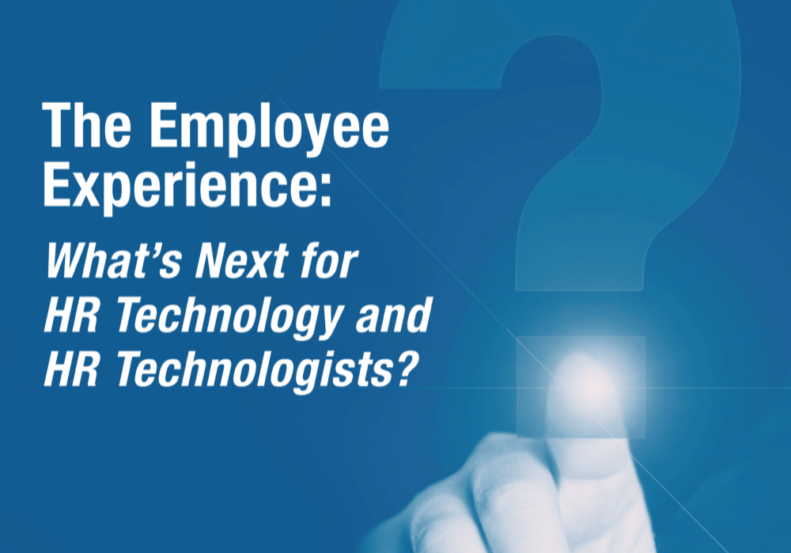The move to cloud computing for core HR and talent applications has provided distinct advantages to HR teams: more rapid access to new features, updates and fixes that don’t require IT intervention, elimination of expensive maintenance contracts, and escape from massive new releases that caused major upheaval (and cost) to re-implement. However, implementing a new HCM cloud application is just the beginning — sustaining, optimizing, and innovating the app is where the real work begins and value is derived. While cloud computing shifts the infrastructure management to the solution provider, many choices confront the HCM team in that the implementation of many new features—sometimes half or more of all in a new release, are up to the users’ choice. Realistically, it is unlikely that an organization can implement all optional features per release.
Herein lies the proverbial rub: Despite recognizing the value of the cloud proposition, HR has woefully lacked in executing a strategy for on-going Cloud feature implementation and the personnel to make critical decisions. If the plan for ongoing HCM cloud operations and governance was not included in the business plan (and, alas, it too often is not), it should occur early in the implementation process. However, far too frequently, no plan whatsoever is made for post- implementation management and the people to do it. Without focused attention on the release management process—ideally led by a dedicated release manager—companies may be unable to optimize their HCM cloud application and incorporate the new features and functionalities their businesses need or want.
Executives need to better understand the resource implications for the management of their cloud technology, that more or different skills are often needed to manage the new environment post-implementation to produce the anticipated results.
The dilemma for cloud users is this: often while they are working on their initial implementation, a new release ships; sometimes another follows right on the heels of their first “go-live.” In this instance, the HR team may be two releases behind at the point they are trying to get their new system into productive use. All the mandatory features are automatically implemented—but what of all those options?
Managing the HCM cloud application requires the same—if not more—rigor and diligence as the initial implementation; this requires the right people assigned to the task. Shortage of dedicated staffing plagues implementations; the problem is exacerbated when those professionals return to their “day jobs.” Their product knowledge, implementation experience, and expertise in their specific disciplines is still necessary in ongoing cloud application management—and likely does not exist elsewhere in the organization.
The magnitude of the task is not trivial: Oracle, as one example, provides quarterly updates across the entire Cloud HCM suite, stating that it releases hundreds of capabilities every release. While it varies with each release, approximately 50% of new features are delivered turned on – meaning enabled immediately for clients – and another 50% are optional and left up to the customer. Generally, changes in behavior (like new “multiple assignments” functionality) are optional while new additional features (like new reports, or legislative requirements) are automatically enabled. Workday, as another example, has two major updates yearly; last year SAP also moved to a bi-annual release cycle for its cloud HRM suite. All these solutions provide many new optional features in each release. But the point here is not the “what” but the “who”: who makes decisions about all those new features and their implementation.
It is not just the HCM suite providers solutions that users need to anticipate and address. More pointed solutions, such as those for training or talent acquisition, also delivered in the cloud, require the same ongoing attention. Cornerstone, for instance, release 4 new versions yearly, with patches and fixes about every two weeks. It averages 65 new features per release – the majority of which are optional and configurable. The company’s acquisition, Saba, releases its cloud application three times yearly with on average 100 new features, again, mostly optional and requiring user configuration. Because the majority of these discipline-specific solutions require integration with the core HR or ERP products, the effort, the impact, and the integration work need to be carefully determined and addressed.
One of my favorite quotes comes from a designated professional in charge of managing HCM releases:
“It’s Christmas morning with every single release, but we don’t even have time to open all of our presents. We are just tossing them into the next room because we are so inundated with just doing our day jobs, we don’t even know what’s out there. We’ve missed so many opportunities since we went live, and now at this point, we don’t even know what we’ve missed.”
-Senior Human Resources Consultant, Large Public Utility
Who Owns the Problem?
Some of the features in a new release present IT-level issues; others—in general the majority—are business-level process features. With multiple cloud vendors, the platforms, user interfaces, and administrative tools are often very dissimilar, handling administrative policies, risk management, permissions, and security very differently. Those are areas likely in the realm of the IT or HRIT staff. But the determination on which new features to implementation in a release is a horse of a different color: it relates to the business processes within talent units, for example, and requires balancing of departmental requests and the capacity to integrate the new function into the business with the least disruption.
When the decision on features relevant to HR is left to an IT professional, the decision to implement or not may be made on the perceived difficulty or the time synch in doing so, rather than the business value. Even with HR-savvy HRIT professionals, the choice of what to implement and what to park for later, may not be made with an eye to overall HR or corporate strategy.
Yet even when a designated release manager exists, he or she may not be in a position to weigh the relative importance of, for example, a new feature for payroll management with a new feature for talent acquisition, especially if the feature is a part but not all of a solution, rather a prerequisite for an upcoming new feature. Therefore, specific knowledge of not only the planned initiatives of each discipline within HR is necessary, but also the long-term strategic merit of one over another.
The Process
For each cloud release, whether large or small, there are series of required steps to be undertaken (and qualified people assigned to be responsible for them):
- Address mandated changes — you have no choice, but someone has to review as there may be changes in the affected processes or a downstream effect on existing policies or procedures; is training or retraining necessary?
- Evaluate new features, which may extend across the multiple disciplines of core HR and talent management, and decide which to implement and which to hold for a later date.
- Determine and weigh the likely implementation implications; given your resources, what is feasible to accomplish successfully?
- Consider the balance between “have-to-have,” and “nice to have” with the degree of difficulty or the productivity hit to your existing operations
- Document implementation and feature decisions made and their rationale; also document features of functionality “parked” for later review or implementation, including what areas of HR for which they may be prerequisite
- Plan for any new third party or ERP integrations that may be needed and check that existing integrations still work
- Conduct regression testing to ensure that new functionality works smoothly in the existing environment
- Deploy the decided-upon features in a test or non-production environment or sandbox
- Once tested, deploy on the production instance
- Communicate any changes in processes or features to stakeholders
- Determine the change management ramifications and any need for new training
This is not trivial. Think about it: With each release, changes should be evaluated by both functional and technical staff, prioritized and weighted against functionality from the previous release that may have been “parked” and not implemented, and regression-tested in a replica of the operational environment. In addition, user acceptance testing with a review of the training, change management, and documentation needs for each new feature must be accommodated. The release manager—and there should be one designated as a “for sure”—may be the one to determine if the change does what it’s supposed to do without breaking something else, but he or she may not be the person responsible for selecting which functions and features are implemented to the exclusion of others.
Skills Required
A designated release manager is important—I think imperative, but likely insufficient, hence, a team may be required for new release review. As features vary by discipline from release to release, the “deciders” on feature implementation may likely vary as well. In conclusion, Bersin research summarized the skill sets needed as follows:
- The business acumen to assess cost versus benefit
- HR functional expertise to determine the need for and impact of a new feature
- Technical experience to assess impact on other systems throughout the organization
- The ability to coordinate the integration effort
- The ability to ascertain the effect on security or privacy
- The knowledge to balance the desire of one organization for new functionality against that of another when resources to implement and test the new features are scarce
Add to this the ability to evaluate, integrate and train on new compliance requirements, to ready the organization for the ramifications of the AI technology in almost all new HR solutions today, and evaluate new features consistent with the applicability to work-from-home and return-to-work imperatives. These skills are all necessary in some form for ongoing success.
To derive the value HR organizations anticipate with their cloud investments, a plan for the long-term management and governance of a new cloud HCM application releases is essential; the investment in personnel dedicated to the task is mandatory. Cloud solutions are dynamic, always enhancing and adding new features—the implementation of the app is solely the first step, not the destination. Creating the support infrastructure, adequately staffed, and an on-going management model is essential.



